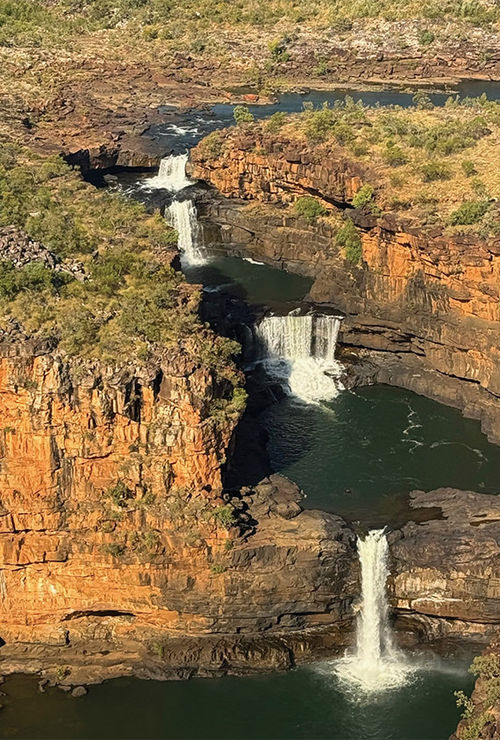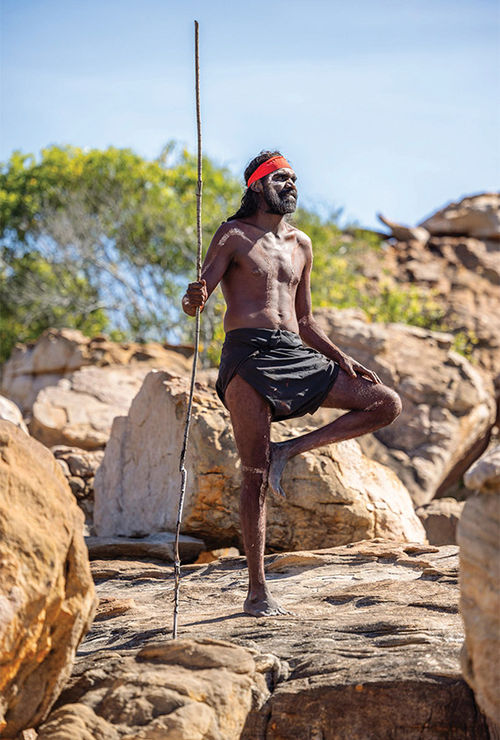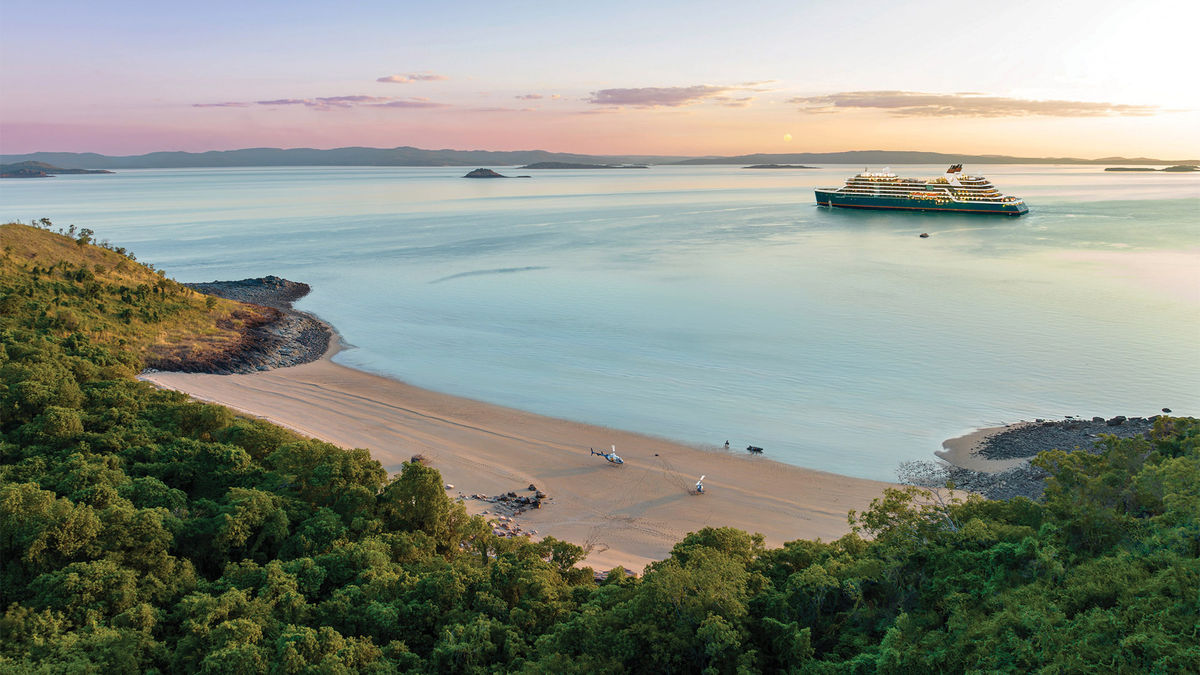Jason Flesher, director of discovery operations for Scenic Group, likes to joke that everything in Australia wants to kill you.
It’s an element that makes an expedition cruise to Australia’s remote Kimberley region “a little more adventurous,” he said.
Threats aside — namely from crocodiles — expedition cruise ships are flocking to the warm waters of the Kimberley this year, attracted to the ancient Montgomery Reef, horizontal waterfalls and access to the Aboriginal culture.
“If you love Antarctica, this is the next place to go, because it’s unreachable other than by expedition ship, and it’s just as beautiful but in a different aspect,” Flesher said.
Just two years ago, there were only three cruise operators in the Kimberley. This year, at least eight operators are sailing in this northwestern corner of Australia, Flesher said. They include Lindblad Expeditions, Ponant, Seabourn Cruises, Scenic, Silversea Cruises and Australia-based Coral Expeditions.

A waterfall in the Prince Regent River area of Australia’s Kimberley region. Photo Credit: Courtesy of Scenic Group
The Kimberley’s red sandstone rock and its interesting formations, greenery and indigenous cultures are reminiscent of the American Southwest, according to Flesher, making it a draw for fans of Western films.
As the cruise industry blooms in this rugged region, the operators are aware of the importance of not overwhelming its national parks and Aboriginal communities; the indigenous people of the Kimberley have resided there for more than 50,000 years, longer than any other group has resided in one place.
With no local scheduling tool, Flesher said the cruise operators there took it upon themselves to create one and work together so as not to overrun the region and its people.
And scheduling can be tricky, he said, as the Kimberley is known for eight- to 14-meter tide swings every six hours. It dictates when a ship can call along the remote coast and makes timing and working together critical.
Operators must also secure permits from multiple governing authorities along with Aboriginal communities — not to mention that planning Zodiac landings in this region means first making sure the area is clear of saltwater crocodiles.
Honoring tradition

Wunambal Gaambera Traditional Owners, indigenous people of the Kimberley, were chosen as godparents for the Seabourn Pursuit. Photo Credit: Courtesy of Seabourn Cruises
The region, and its Aboriginal communities, are so important to the cruise lines operating there that Seabourn named the region’s Wunambal Gaambera Traditional Owners as godparents of its second expedition ship, the Seabourn Pursuit.
Traditional owners is an Australian term for people whose ancestors are connected to a particular land. The Wunambal Gaambera Traditional Owners hail from Ngula Jar Island, located in Vansittart Bay; Yirinni, on the Hunter River; and Ngauwudu, in the Mitchell Plateau, places in the Kimberley where Seabourn plans to call.
Seabourn will also donate to the Wunambal Gaambera to help it produce arts and crafts to sell as well as supply them with pearl shells, art supplies and polishing materials.
Robin West, vice president and general manager of expeditions for Seabourn, said Kimberley cruises have received an “overwhelmingly positive response” from cruisers and are particularly popular among North American and Australian travelers.
“We’re always looking for new destinations to visit because our guests are always seeking to discover natural and cultural wonders in some of the farthest corners of the planet,” he said. “This is what the Kimberley offers, so it was a natural fit to take Seabourn Pursuit to explore this part of the world.”
For Scenic, the two helicopters on its expedition ships enable it to work with the Aboriginal communities to offer unique excursions. Scenic has a permit to fly guests directly to certain indigenous lands, such as pools above waterfalls far removed from crocodiles and to pearl farms for tours. Guests can also visit Aboriginal communities and experience their culture through traditional artwork and dances.
And when the waves are too strong to take guests to land on Zodiacs, the helicopter can fly Aboriginal people to the ship to perform and speak to guests.

Nurse sharks swimming near a Zodiac in Kuri Bay. Photo Credit: Courtesy of Scenic Group
Who should go?
Adventurous travelers who have cruised Antarctica and the Arctic want somewhere new to go, said Claire Maguire, an expedition-focused travel advisor and owner of Fort Lauderdale-based Cruise Planners franchise Island Girl Travel and Vacations.
“Everyone’s pretty much been everywhere, now,” she said.
With a little more than a week before embarking on her first sailing in the Kimberley, Maguire said she’d qualify guests for this region by understanding where they have gone already or by presenting the destination to clients who are uninterested in the cold polar regions or are attracted to a more tropical destination. (The Kimberley has an average temperature of 80 degrees, even during winter months and temps can get as high as 101.)
But with the crocodiles, there’s a caveat.
“It’s not going to be for somebody who’s thinking it’s going to be like a Caribbean, jump-off-the-boat swim-in-the-ocean kind of a vacation,” she said. “I think it’s going to be very carefully qualified.”







